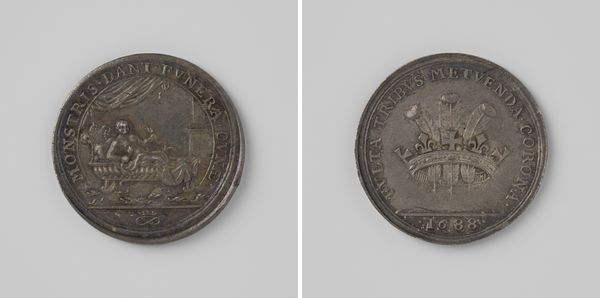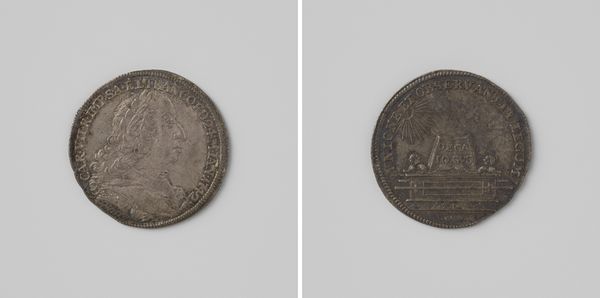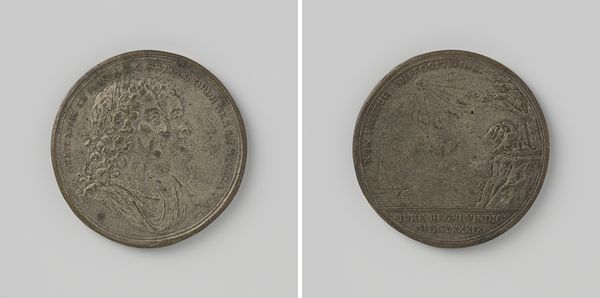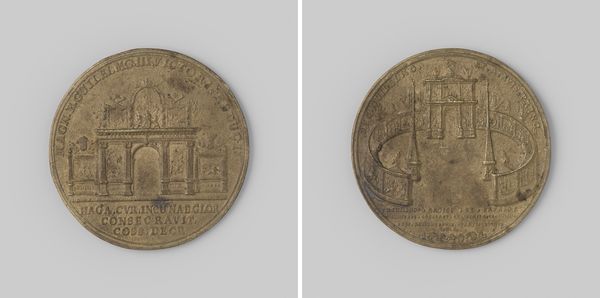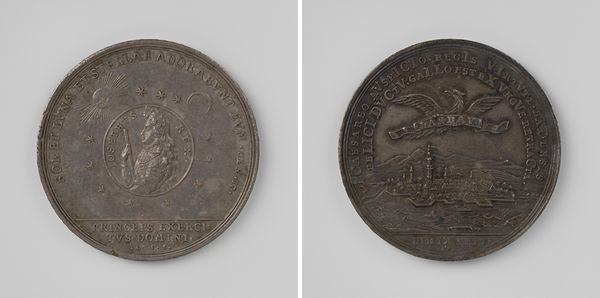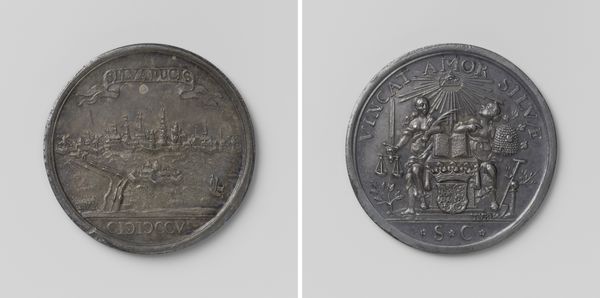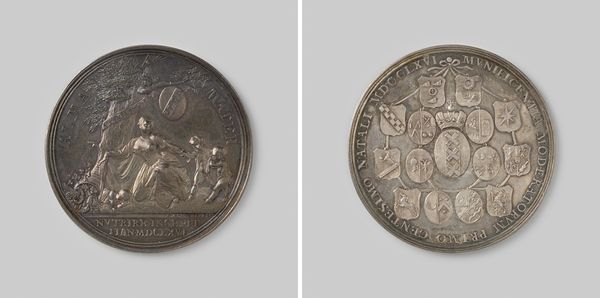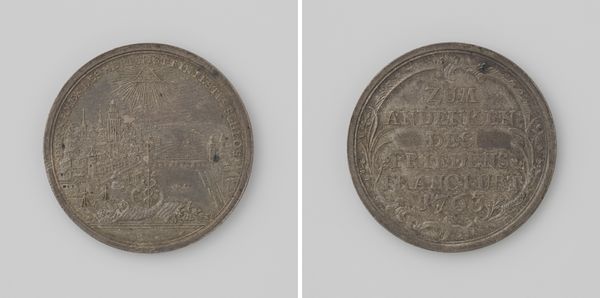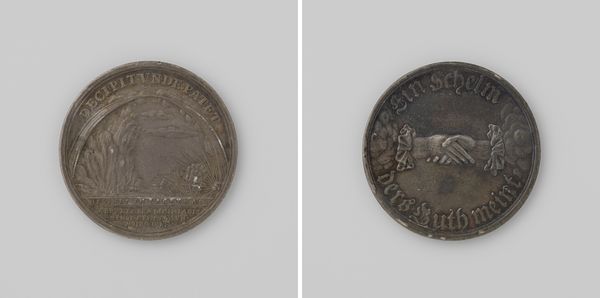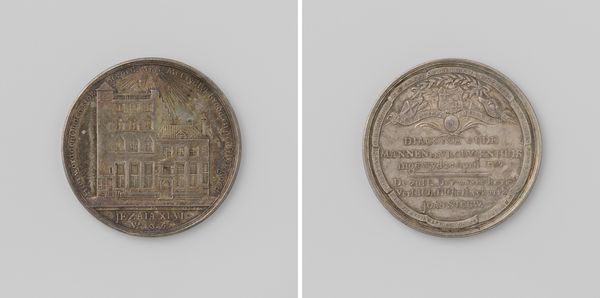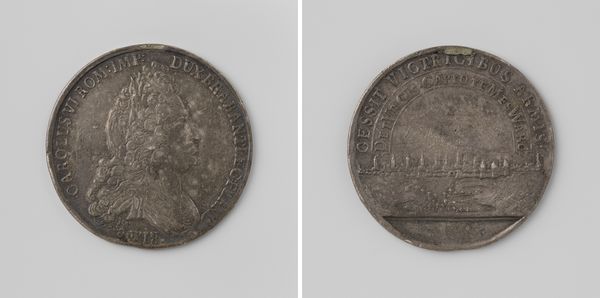
Invoering van de Gregoriaanse tijdrekening door de protestantse, Duitse vorsten 1700
0:00
0:00
print, metal, relief, sculpture
#
portrait
#
baroque
# print
#
metal
#
sculpture
#
relief
#
sculptural image
#
sculpture
#
history-painting
#
statue
Dimensions: diameter 4.3 cm, weight 27.15 gr
Copyright: Rijks Museum: Open Domain
Curator: At first glance, this circular metal relief reminds me of a coin, a symbol often imbued with societal power. What do you see? Editor: Immediately, I’m struck by the duality. The image feels rigidly symbolic and yet there's a clear political undertone, even perhaps a tinge of subversive messaging embedded within what appears to be formal commemorative artwork. Curator: Precisely. This piece, titled "Invoering van de Gregoriaanse tijdrekening door de protestantse, Duitse vorsten," was created around 1700 by Georg Friedrich Nuernberger. It commemorates the adoption of the Gregorian calendar by Protestant German princes. Editor: The imagery is striking: on one side, a flame burns atop what looks like a monument while angels float beneath a radiant all-seeing eye. The other depicts the bust of a ruler with what looks like calendar dates on a stone block. There's something powerful in how time and authority are so overtly merged. Curator: Indeed, time itself was political then. The adoption of the Gregorian calendar was contentious. Here, we see it presented as a rational reform. Considering the era, and the conflict between Protestant and Catholic regions at the time, the choice of calendar had significant cultural and religious implications. Editor: Absolutely, calendar reform wasn’t simply about administrative convenience, it redefined social rhythms, religious observances, and ultimately, the power to control time. And control means authority, right? The piece celebrates a secular move under divine observation, according to its imagery. I find myself asking, how did ordinary people receive it? How were their lived experiences impacted? What are we not seeing? Curator: Those are vital questions, considering this print might have served to create or reinforce political legitimacy. These images were carefully crafted and meant to disseminate political ideals, but not always as people receive or engage with the intended message. It highlights the public role of art in image and policy creation, specifically, the complex relationship between social change and image making. Editor: Examining this piece really highlights the role of art in shaping collective memory and even creating reality. Curator: A powerful reminder that visual culture is always embedded in a context that's socially constructed. Editor: It makes you wonder: how much has changed?
Comments
No comments
Be the first to comment and join the conversation on the ultimate creative platform.
